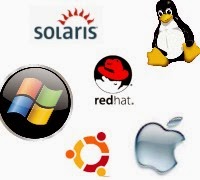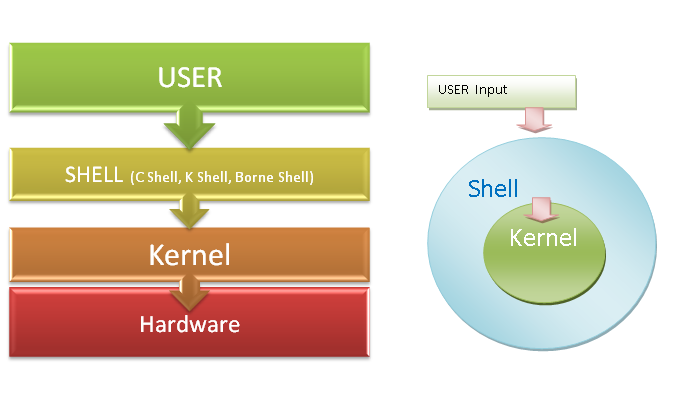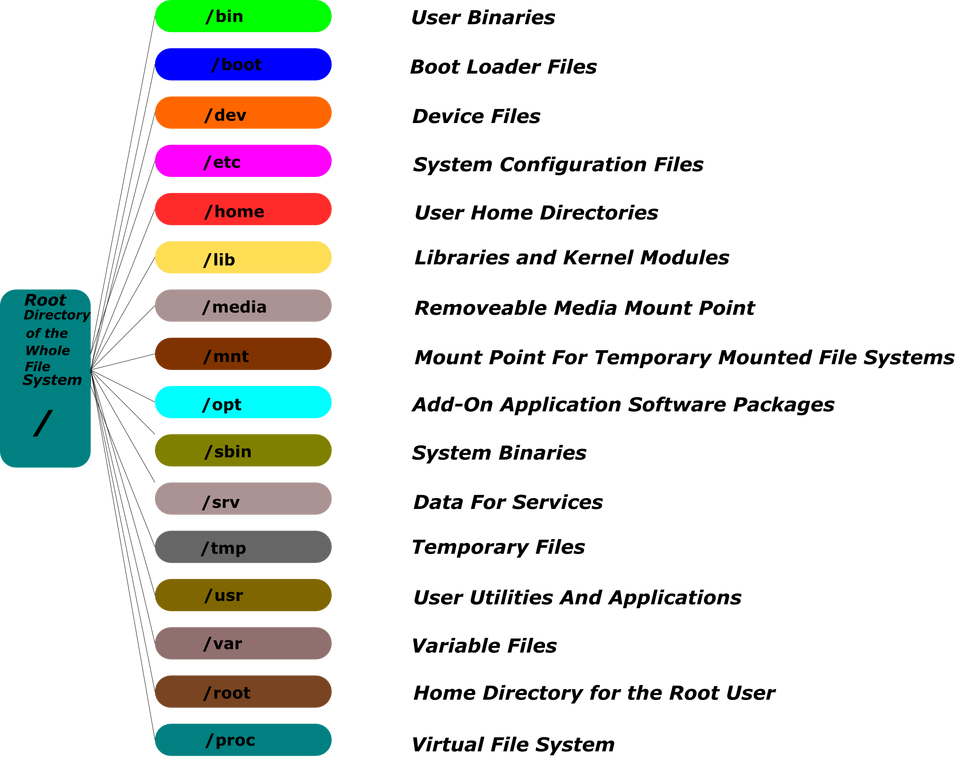Introduction to Linux Operating System
INTRODUCTION TO LINUX
What is Operating System ?
Operating system is an interface between user and the computer hardware. The hardware of the computer cannot understand the human readable language as it works on binaries i.e. 0’s and 1’s. Also it is very tough for humans to understand the binary language, in such case we need an interface which can translate human language to hardware and vice-versa for effective communication.

Types of Operating System:
· Single User – Single Tasking Operating System
· Single User – Multitasking Operating System
· Multi User – Multitasking Operating System
Single User – Single Tasking Operating System
In this type of operating system only one user can log into system and can perform only one task at a time.
E.g.: MS-DOS
Single User – Multi tasking operating System
This type of O/S supports only one user to log into the system but a user can perform multiple tasks at a time, browsing internet while playing songs etc.
E.g.: Windows -98,Xp,vista,Seven,Eight etc.
Multi User – Multi Tasking Operating System
These type of O/S provides multiple users to log into the system and also each user can perform various tasks at a time. In a broader term multiple users can logged in to system and share the resources of the system at the same time.
E.g.: UNIX, LINUX, Windows Server etc.
UNIX Principles
- Everything is a file:- UNIX system have many powerful utilities designed to create and manipulate files. The UNIX security model is based around the security of files. By treating everything as a file, you can secure access to hardware in the same way as you secure access to a document.
- Configuration data stored in text: – Storing configuration in text allows an administrator to move a configuration from one machine to another easily, provide the ability to roll back a system configuration to a particular date and time.
- Small, Single-Purpose Programs: – UNIX provides many utilities.
- Avoid captive user interfaces:- No Regular prompting like windows before doing any task. Even before deleting the files as well.
- Ability to chain programs together to perform complex tasks:- A core design feature of UNIX is that output of one program can be the input for another. This gives the user the flexibility to combine many small programs together to perform a larger, more complex task.
ARCHITECTURE OF UNIX

The architecture of UNIX can be divided into three levels of functionality, as shown in Figure . The lowest level is the kernel , which schedules tasks , manages resources, and controls security. The next level is the shell, which acts as the user interface, interpreting user commands and starting applications. The highest level is utilities, which provides utility functions. In other words it is the USER level, as user is the one who operates those utilities.
FILESYSTEM HIERARCHY

Linux uses single rooted, inverted tree like file system hierarchy
/ This is top level directory
It is parent directory for all other directories
It is called as ROOT directory
It is represented by forward slash (/)
It is like C: of windows
/root It is home directory for root user (super user)
It provides working environment for root user
It is similar to C:Documents and SettingsAdministrator
/home It is home directory for other users
It provide working environment for other users (other than root)
Same as C:Documents and Settingsusername
/boot It contains bootable files for Linux
Like vmlinuz (kernel)….. ntoskrnl
Initrd (INITial Ram Disk)and
GRUB (GRand Unified Boot loader)…. boot.ini, ntldr
/etc It contains all configuration files
Like /etc/passwd….. User info
/etc/resolv.conf… Preferred DNS
/etc/dhcpd.conf…. DHCP server
Like C:windowssystem32drivers
/usr By default soft wares are installed in /usr directory
(UNIX Sharable Resources)
Similar to C:program files
/opt It is optional directory for /usr
It contains third party softwares
c:program files
/bin It contains commands used by all users
(Binary files)
/sbin It contains commands used by only Super User (root)
(Super user’s binary files)
/dev It contains device files
Like /dev/hda … for hard disk
/dev/cd rom … for cd rom
Similar to device manager of windows
/proc It contain process files
Its contents are not permanent, they keep changing
It is also called as Virtual Directory
Its file contain useful information used by OS
like /proc/meminfo … information of RAM/SWAP
/proc/cpuinfo … information of CPU
/var It is containing variable data like mails, log files
/mnt It is default mount point for any partition
It is empty by default
/media It contains all of removable media like CD-ROM, pen drive
/lib It contains library files which are used by OS
It is similar to dll files of windows
Library files in Linux are SO (shared object) files
I Hope this will help you to understand linux operating system
Comments are closed.

lokesh
September 14, 2016 at 5:34 pmLokesh Babu M
lokeshbabu6@gmail.com